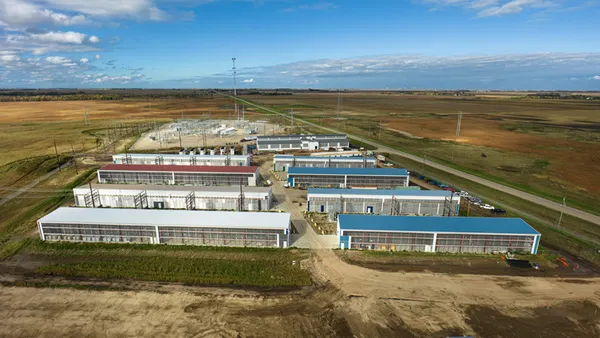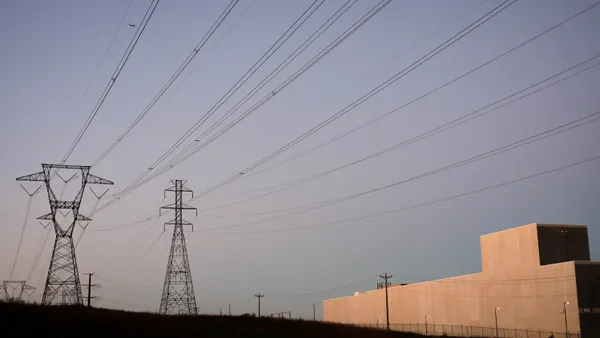Dive Brief:
- ISO New England expects to have sufficient electricity supplies to meet demand this winter, but that outlook depends on mild temperatures and the availability of fossil fuel supplies, the grid operator warned in a seasonal forecast last week.
- Demand forecasts in New England are about 2% lower this year than last but weather and fuel issues "could put the region in a more precarious position than past winters," ISO CEO and President Gordon van Welie said on a Dec. 6 call with reporters.
- The grid operator expects peak demand of 19,710 MW during average winter conditions this year and has capacity resources of more than 31,000 MW available. Natural gas pipeline constraints, and the global availability of oil and liquefied natural gas, will also play a role should colder weather occur.
Dive Insight:
On Friday, ISO New England published a winter outlook summary that put its seasonal risk in stark terms. The grid operator expects it can keep the lights on "if the weather is mild."
The National Oceanic and Atmospheric Administration is predicting a milder winter for the region. "If this forecast holds true, and we hope it does, the ISO expects to have the resources needed to meet consumer demand throughout the winter season," van Welie said.
"But even a mild winter forecast does not preclude extended cold snaps," van Welie added. "Such prolonged cold snaps would heighten the probability that emergency measures would have to be taken to keep the system from collapsing."
The ISO said its outlook was informed by recent years, including 2017-18 when forecasts for a mild winter did not materialize and major cities across the region experienced almost two weeks of below normal temperatures. Record winter peak demand for the grid operator is 22,818 MW, which it experienced during a January 2004 cold snap.
Along with weather, ISO New England officials say the grid faces potential fuel supply challenges. Colder temperatures mean more natural gas is used for heating, reducing supplies available to generators. Along with gas from pipelines, the region also uses oil and liquefied natural gas to generate electricity, and the grid operator warned that current storage levels of both are "lower than in recent winters."
To meet demand, the ISO said it has 31,397 MW of resources available with a capacity supply obligation. Total resources, including those without capacity obligations, top 34,000 MW.
But it also warned that this winter more than 3,700 MW of gas-fired generation resources are "at risk of being unable to get fuel when needed." While the region's power plants, transmission lines, and other equipment are weatherized to withstand cold temperatures, "we are concerned about the fragile energy supply chain to the region during extreme weather," the ISO said.
"The region has yet to find a robust solution to bolster the supply chain for these fuels during inclement weather," van Welie said. "Adverse weather conditions could further exacerbate these supply chain issues," he added, and restrictions on power plant emissions may limit how long they can run.
The operator also said it continues to keep an eye on how COVID-19 is impacting the electric grid. The pandemic is having "minimal effect" on peak demand, the ISO said in a statement, though there has been increased energy use during the day as many workers continue to be remote.
"This increased energy use could exacerbate fuel supply issues during a prolonged cold snap," the ISO said.














